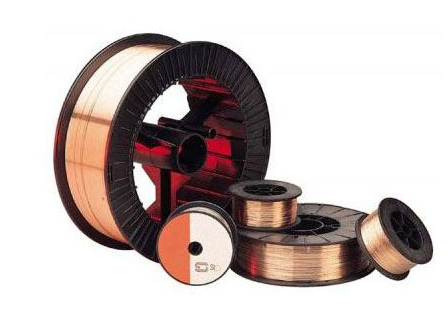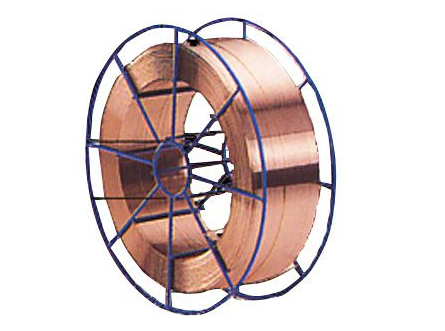Choosing the right metal alloy for a project can be challenging due to the variety of options available. Copper, brass, and bronze are three popular choices, each with unique properties and applications. This guide compares these metal alloys in terms of composition, properties, uses, and maintenance to help you make an informed decision.
Copper: Composition and Properties
Copper is a pure metal known for its excellent electrical and thermal conductivity, malleability, and corrosion resistance. Its distinctive reddish-brown color and ability to form a green patina over time make it aesthetically pleasing for decorative purposes.
**Composition:** Copper is a natural element with the chemical symbol Cu and an atomic number of 29. It can be used in its pure form or alloyed with other metals to enhance certain properties.
**Properties:**
- High electrical and thermal conductivity
- Excellent ductility and malleability
- Good corrosion resistance
- Antimicrobial properties
- Forms a protective green patina (copper oxide) over time.

ERCuAl-A1
Brass: Composition and Properties
Brass is an alloy primarily composed of copper and zinc, with the proportions of each element varying to produce different types of brass. The addition of zinc improves the strength and hardness of brass compared to pure copper.
**Composition:** Typically, brass consists of 60-70% copper and 30-40% zinc. Additional elements like lead, tin, and aluminum may be added to enhance specific properties.
**Properties:**
- Good strength and ductility
- Lower electrical conductivity than copper
- Attractive yellow-gold color
- High corrosion resistance
- Easy to machine and cast
Bronze: Composition and Properties
Bronze is an alloy consisting primarily of copper and tin, with other elements such as aluminum, manganese, and nickel sometimes added. It is known for its hardness, wear resistance, and ability to form a protective oxide layer.
**Composition:** Traditional bronze consists of about 88% copper and 12% tin. Modern bronzes may include other elements to enhance certain properties.
**Properties:**
- High strength and durability
- Excellent wear and corrosion resistance
- Good thermal and electrical conductivity (though lower than copper)
- Reddish-brown color, often with a dull finish
- Forms a protective oxide layer that prevents further corrosion
Applications of Copper, Brass, and Bronze
The unique properties of copper, brass, and bronze make them suitable for various applications across different industries.
**Copper Applications:**
- Electrical wiring and components
- Plumbing and piping
- Roofing and architectural elements
- Cookware and kitchen utensils
- Art and decorative items
**Brass Applications:**
- Musical instruments (trumpets, saxophones)
- Plumbing fittings and valves
- Decorative hardware (door handles, light fixtures)
- Marine applications (due to corrosion resistance)
- Ammunition casings
**Bronze Applications:**
- Bearings and bushings (due to wear resistance)
- Marine hardware (propellers, pumps)
- Sculptures and art
- Coinage and medals
- Industrial applications (gears, springs)

ERCuAl-A2
Maintenance and Care
Proper maintenance can extend the lifespan and appearance of copper, brass, and bronze items.
**Copper Maintenance:** Clean with a mixture of vinegar and salt to remove tarnish, then rinse with water. To maintain its shine, polish with a commercial copper cleaner. Allow the natural patina to develop if a green finish is desired.
**Brass Maintenance:** Regularly dust and wipe with a damp cloth. For tarnished brass, use a mixture of lemon juice and baking soda or a commercial brass cleaner. Polish to maintain its bright finish.
**Bronze Maintenance:** Clean with warm, soapy water and a soft cloth. Avoid abrasive materials that can scratch the surface. For heavily tarnished bronze, use a paste of baking soda and lemon juice, then rinse and dry thoroughly. Apply a wax or clear lacquer to protect the surface.
Frequently Asked Questions
What is the main difference between copper, brass, and bronze?
The main difference lies in their composition: copper is a pure element, brass is an alloy of copper and zinc, and bronze is an alloy of copper and tin.
Which metal alloy is best for electrical applications?
Copper is the best choice for electrical applications due to its superior electrical conductivity.
How can I tell the difference between brass and bronze?
Brass typically has a yellow-gold color, while bronze has a reddish-brown hue. Brass is also more malleable, whereas bronze is harder and more brittle.
Can these metal alloys be recycled?
Yes, copper, brass, and bronze are all recyclable. Recycling these metals conserves natural resources and reduces environmental impact.
Why does copper turn green over time?
Copper turns green due to the formation of a protective layer of copper carbonate, known as patina, which occurs when copper reacts with oxygen, carbon dioxide, and moisture over time.
In conclusion, copper, brass, and bronze each have distinct characteristics that make them suitable for various applications. By understanding their properties, compositions, and maintenance needs, you can choose the right metal alloy for your specific requirements.







